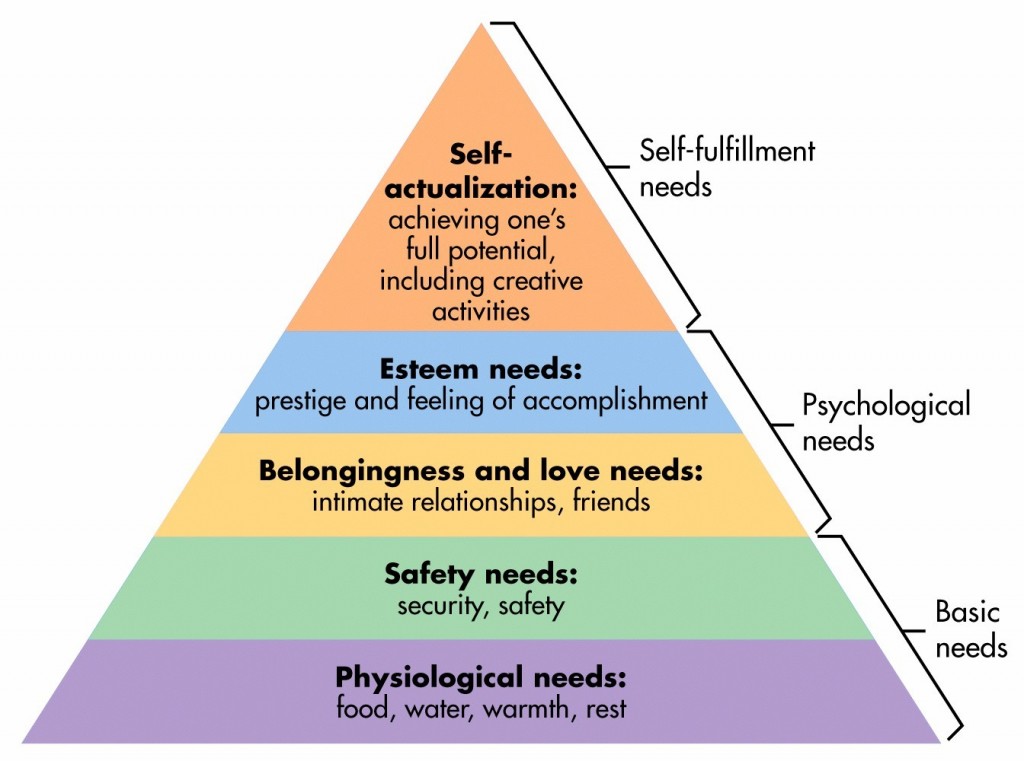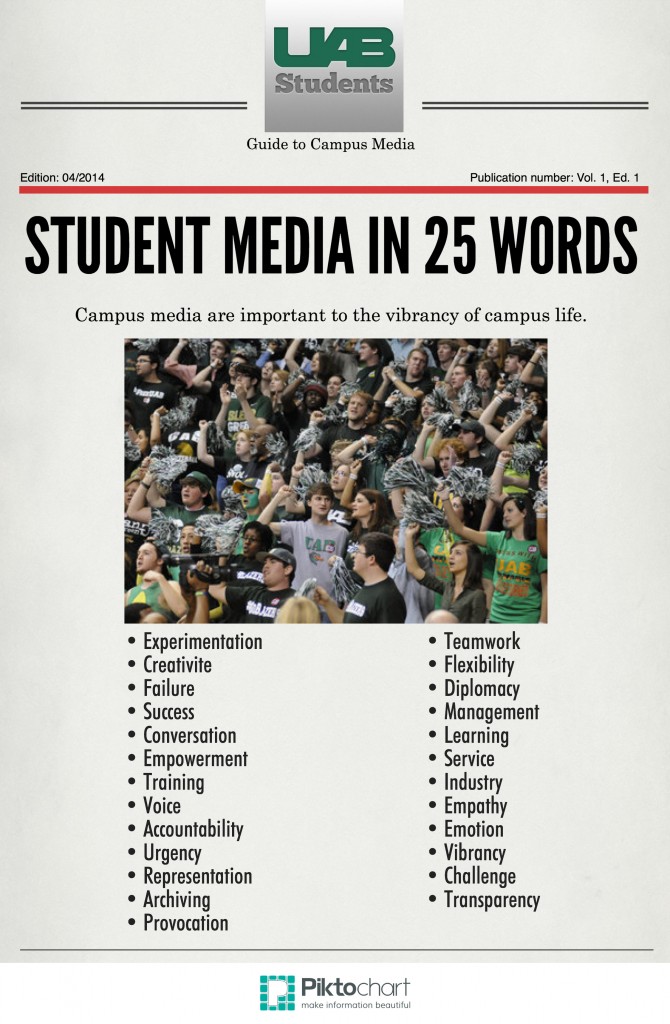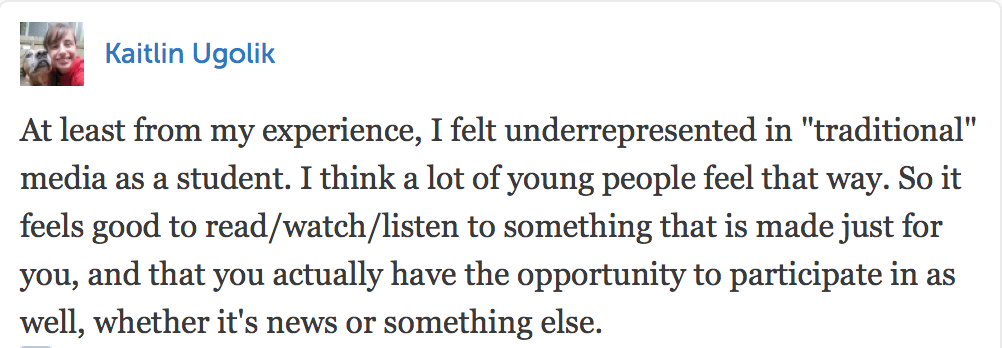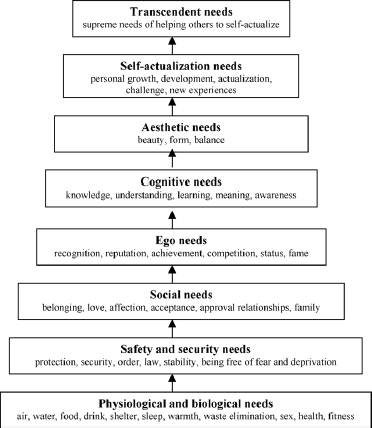Below are links to the materials, notes and further clarification to remarks I referenced in my Student Media & Its Role on the College Campus Presentation presentation delivered at the University of Alabama-Birmingham April 11, 2014. In addition, you can download the Keynote I used and find other materials that may be helpful. If you have any questions about what we discussed, please feel free to email me at cmdonohue@gmail.com.
When I thought about the importance of student media to a college campus, I generated a list of 25 words to help with the explanation. These words are the result of my thinking and my crowdsourcing of the topic. I posted the question, “Why do you think student media is important to a college campus?” to both Twitter and Facebook. Many of my followers and friends responded, and you can view everything they had to say via Storify.
EXPERIMENTATION
“How dare you settle for less when the world has made it so easy for you to be remarkable?” – Seth Godin
If I could sum up the environment I attempt to create in the newsroom and in the classroom, it would be “experimental.” I want students who wish to take risks, embrace challenges and find solutions. Experimentation can be applied to a number of delivery areas, but I like to view it through an online lens. As student media groups, how are we leveraging the global reach of our websites and social media presences? Are we taking educated chances?
http://www.collegemediamatters.com/2012/09/19/advantages-disadvantages-to-student-media-digital-experimentation-my-response-to-steve-buttry-report/ — Dan Reimold on the advantages and disadvantages of experimentation
http://www.poynter.org/how-tos/newsgathering-storytelling/208008/how-journalists-are-experimenting-with-the-one-shot-technique-to-tell-video-stories/ — Journalists experimenting with one-shot technique for packages
http://mustangnews.net/krieghoff-humbled-by-spotlight/ — “Krieghoff humbled by spotlight”
http://mustangnews.net/connecting-on-the-spectrum/ — “Connecting on the spectrum”
http://mustangnews.net/the-rivalry-edition/ — “The Rivalry Edition”
FAILURE
“The secret to being wrong isn’t to avoid being wrong. The secret is being willing to be wrong. The secret is realizing that wrong isn’t fatal.” – Seth Godin
http://sethgodin.typepad.com/seths_blog/2011/04/how-to-fai.html — Seth Godin on how to fail
http://sethgodin.typepad.com/seths_blog/2013/05/a-hierarchy-of-failure-from-brave-to-shameful.html — Seth Godin on the hierarchy of failure
This one always sounds funny, but I find it so important. And it follows logically from reason No. 1 – experiment. Failure is quite important to the long-term success of any individual or organization. In fact, many people fail until they succeed. We should encourage student media organizations to look at failure not as a missed opportunity, but as one more thing that didn’t work, as Godin says.
The Pendulum experimented with a new distribution model …
… but it didn’t work out entirely the way the staff hoped. And that was OK. They attempted something drastic and innovative. It didn’t work. The students saw it, analyzed it and addressed it. That kind of failure is OK. And it’s the kind of failure that could only exist at a student media organization. Wrong wasn’t fatal.
ENGAGEMENT
“Know who you’re talking to so you can know what they need.” – James Janega, Poynter
http://www.profkrg.com/tips-using-social-media-content-promotion — ‘How Journalists Can Use Social Media to Build Reader Relationships’
http://www.poynter.org/how-tos/community-engagement/191825/5-ways-to-better-engage-with-your-audience-in-person-and-online/ — Tips for better engaging your audience
http://www.amazon.com/Producing-Online-News-Digital-Stronger/dp/1604269960 — Thornburg’s “Producing Online News”
http://www.marketingcharts.com/wp/online/college-students-own-an-average-of-7-tech-devices-30430/ — “College Students Own an Average of 7 Tech Devices”
Engagement means two different things here. First, it’s about students in media organizations engaging with their medium and its responsibilities. Second, it’s about how students engage with their audiences.
Student media groups are a training ground for future DJs, authors, journalists, newscasters. They allow students to engage in professional standards, professional work and professional ethics. The media organizations are the places in which we allow students to perform professional work with little interference. It’s the internship for the internship.
Thornburg said engaging with an audience has many benefits, including:
- It alerts you to things you don’t know
- It lets you know if you’ve made a mistake.
- It gives you a chance to share your knowledge.
- It gives you ideas.
Student media organizations are not one-way dissemination factories. They’re active listeners. They can create a sense of community. They’re necessary to a cultivation of intellectual curiosity, creativity and vibrancy.
REPRESENTATION
“I felt underrepresented in ‘traditional’ media as a student. So it feels good to read/watch/listen to something that is made just for you, and that you actually have the opportunity to participate in as well, whether it’s news or something else.” – Kaitlin Ugolik, reporter
Sudent media organizations are spaces in which they may express themselves freely, openly and honestly. The media groups aren’t necessarily outlets for outcasts. But they are outlets for individualism and creativity. In other words, students find people who, like themselves, may not fit the mainstream.
Student media present information, content and ideas that appeal to a college student. They’re the only groups covering topics of interest to the (primarily) 18-22-year-old set. It’s content by students for students.
Student Media Rocks, Reason #2: Covers issues, angles & ideas ignored or misinterpreted by ‘adult’ press. 1 Ex) http://t.co/ZxmQSHk3WB
— Dan Reimold (@collegemedia) April 7, 2014
Student Media Rocks, Reason #3: Amid yapping profs & admins, ensures student voice is heard– even about JLaw’s butt http://t.co/HdP5rC78fD
— Dan Reimold (@collegemedia) April 7, 2014
EMPOWERMENT
“We are in charge of providing information that does jobs our audience needs done; we are in charge of engaging our audience members in conversations they care about; and we are in charge of helping them become so knowledgeable, engaged and concerned about each other that they can make our college better.” – David Simpson, media coordinator
David Simpson keyed me into a discussion of how student media fit Maslow’s Hierarchy of Needs.
 The highest achievement on his hierarchy is self-actualization, which means realizing potential and self-fulfillment. But he added to it …
The highest achievement on his hierarchy is self-actualization, which means realizing potential and self-fulfillment. But he added to it …
… transcendence as a higher level, which means helping others reach self-actualization. And isn’t that what student media should be about? Helping others reach self-actualization. We help students involved in student media reach self-actualization, and we help the audience reach that, as well, by being creative, by experimenting to the point of failure, by engaging them in conversations and by representing their interests.
This last reason—empowerment—encompasses the previous four I talked about and the remaining 20 from my initial list of 25.
In summary …
Student media are vital to the success and vibrancy of a college campus. The work these students do is essential, and you can’t overstate its importance. It’s our job, as advisers and administrators and staff and faculty, to create for the students an atmosphere of professionalism, creativity and opportunity. Only then will the students thrive. And only then will their importance to the campus community shine through.







